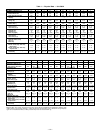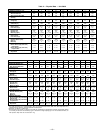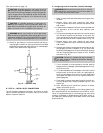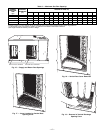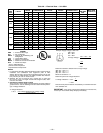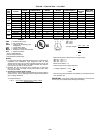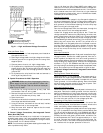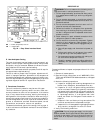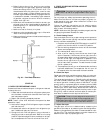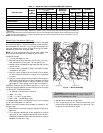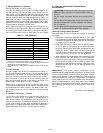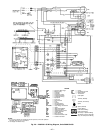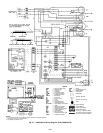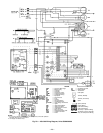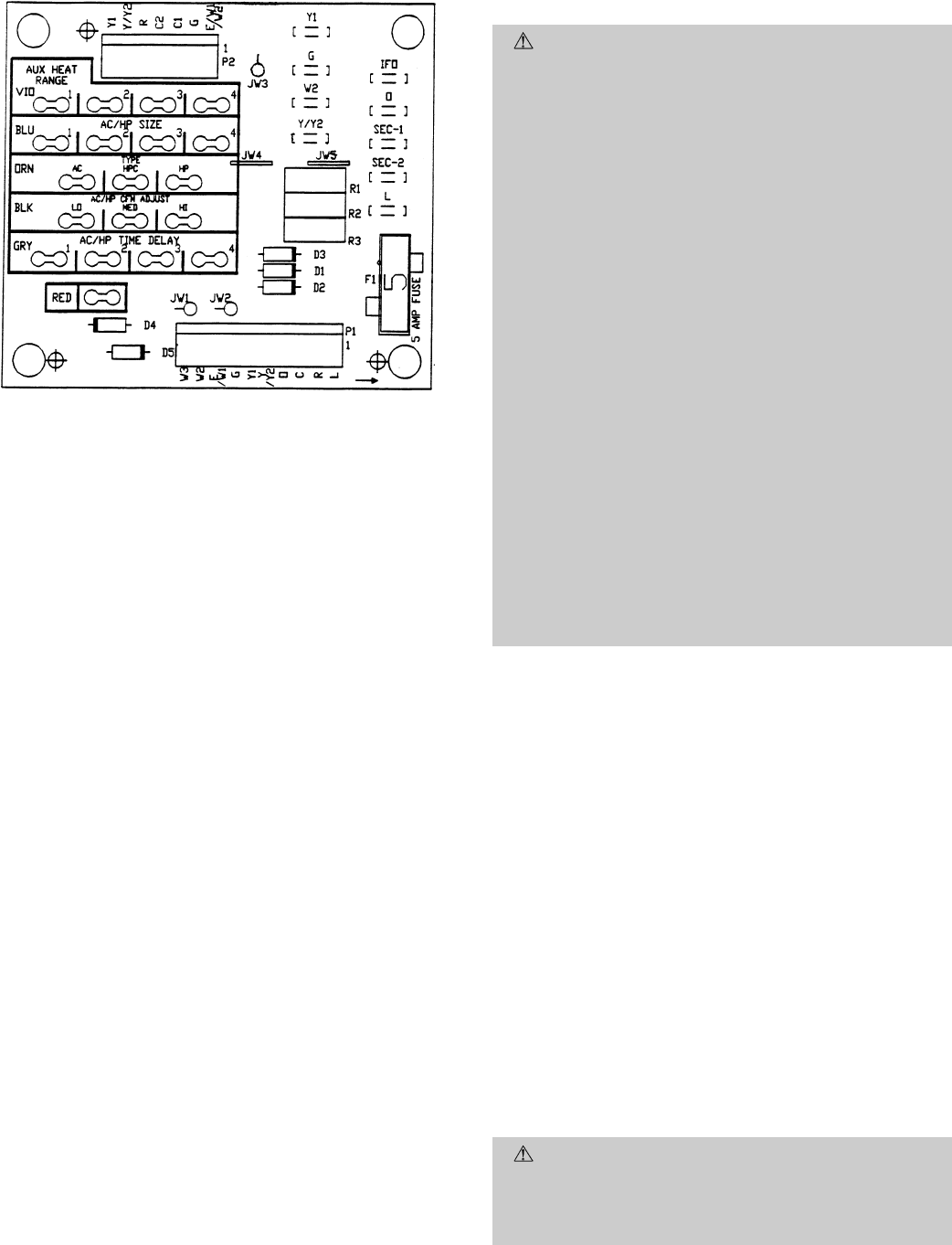
E. Heat Anticipator Setting
The room thermostat heat anticipator must be properly ad-
justed to ensure proper heating performance. Set the heat
anticipator, using an ammeter between the W and R termi-
nals to determine the exact required setting.
NOTE: For thermostat selection purposes, use 0.18 amp for
the approximate required setting.
Failure to make a proper heat anticipator adjustment will
result in improper operation, discomfort to the occupants of
the conditioned space, and inefficient energy utilization; how-
ever, the required setting may be changed slightly to provide
a greater degree of comfort for a particular installation.
F. Transformer Protection
The unit transformer protection may be one of 2 types.
The first transformer type may contain an auto. reset over-
current protector for control circuit protection. If this device
trips, it may reset without warning, starting the heating or
cooling section of this product. Use caution when servicing; if
overcurrent protector continues to trip, there is a problem in
the low-voltage electrical circuit, such as an electrical short,
ground, or transformer overload. Disconnect power, correct
the condition, and check for normal unit operation.
The second transformer type is of the energy-limiting type. It
is set to withstand a 30-second overload or shorted second-
ary condition.
PRE-START-UP
WARNING:
Failure to observe the following warn-
ings could result in serious personal injury:
1. Follow recognized safety practices and wear protec-
tive goggles when checking or servicing refrigerant
system.
2. Do not operate compressor or provide any electric
power to unit unless compressor terminal cover is in
place and secured.
3. Do not remove compressor terminal cover until all
electrical sources are disconnected.
4. Relieve and reclaim all refrigerant from system be-
fore touching or disturbing anything inside termi-
nal box if refrigerant leak is suspected around com-
pressor terminals.
5. Never attempt to repair soldered connection while
refrigerant system is under pressure.
6. Do not use torch to remove any component. System
contains oil and refrigerant under pressure. To re-
move a component, wear protective goggles and pro-
ceed as follows:
a. Shut off gas supply and then electrical power to
unit.
b. Relieve and reclaim all refrigerant from system
using both high- and low-pressure ports.
c. Cut component connecting tubing with tubing cut-
ter and remove component from unit.
d. Carefully unsweat remaining tubing stubs when
necessary. Oil can ignite when exposed to torch
flame.
Proceed as follows to inspect and prepare the unit for initial
start-up:
1. Remove all access panels.
2. Read and follow instructions on all WARNING, CAU-
TION, and INFORMATION labels attached to, or shipped
with, unit.
3. Make the following inspections:
a. Inspect for shipping and handling damages such as
broken lines, loose parts, disconnected wires, etc.
b. Inspect for oil at all refrigerant tubing connections
and on unit base. Detecting oil generally indicates a
refrigerant leak. Leak-test all refrigerant tubing con-
nections using electronic leak detector, halide torch,
or liquid-soap solution. If a refrigerant leak is de-
tected, see Check for Refrigerant Leaks section on
page 23.
c. Inspect all field- and factory-wiring connections. Be
sure that connections are completed and tight.
d. Inspect coilfins. If damagedduring shipping andhan-
dling, carefully straighten fins with a fin comb.
4. Verify the following conditions:
CAUTION:
Do not purge gas supply into the com-
bustion chamber. Do not use a match or other open flame
to check for gas leaks. Failure to follow this warning
could result in an explosion causing personal injury or
death.
LEGEND
IFO — Indoor (Evaporator) Fan On
JW — Jumper Wire
Fig. 22 — Easy Select Interface Board
—22—



